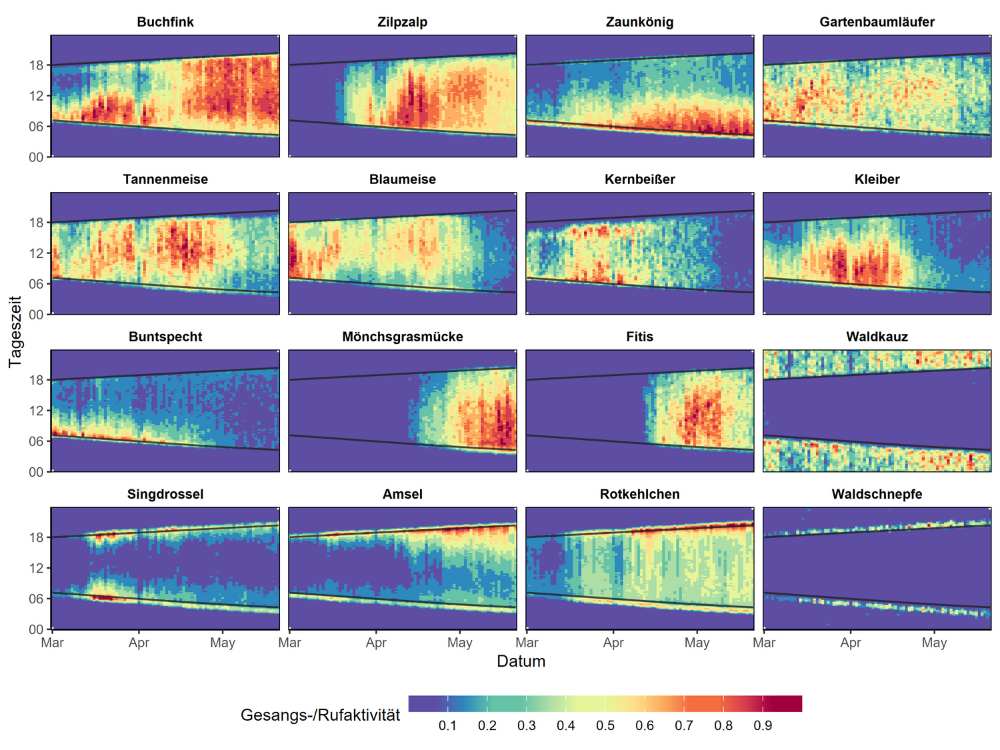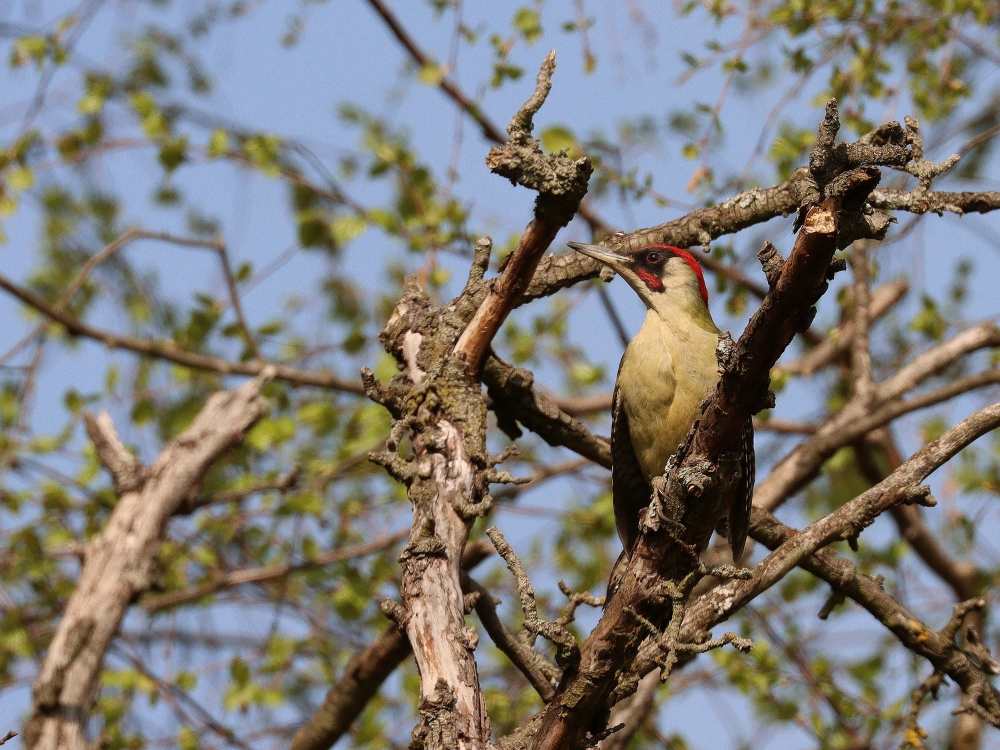Birds in European forests sing at times that don’t match survey guidelines, according to new research. Scientists from the University of Göttingen used artificial intelligence to analyze millions of bird sounds, finding surprising patterns in when different species vocalize.
The research team recorded birds at 256 forest locations in Lower Saxony, Germany. Their devices captured 30-second clips every 10 minutes from March to May, collecting 6.4 million bird sounds. AI technology identified which of the 53 forest bird species made each sound.
“Our data shows that there are far more activity types than ‘larks’ and ‘owls’ among forest bird species,” says David Singer, the study’s lead author from the University of Göttingen.

The traditional view that forest birds mainly sing at dawn proved incomplete. Blackbirds, for instance, vocalize more during evening hours than mornings – something bird counts rarely consider. Some species like the blackbird and woodcock are active at both dawn and dusk.
Season matters too. Black woodpeckers and tits sing most in early spring but grow quieter by late April. Wrens and dunnocks only become vocal in April. Nocturnal birds and migratory species arriving in May follow entirely different patterns.
Similar Posts:
These findings clash with standard bird survey methods. For nearly two-thirds of species (64.2%), recommended survey times don’t match when birds actually sing most. The great spotted woodpecker, previously thought to be detectable all morning, becomes much quieter two hours after sunrise.

Not all traditional knowledge was wrong. Blue tits and chiffchaffs maintain strong vocal activity beyond recommended recording periods, confirming they can be reliably counted later in the day.
“By combining traditional methods of counting birds with the new AI-supported methods of analyzing birdsong, we can significantly improve our knowledge and understanding of bird behavior,” explains Professor Andreas Schuldt, who supervised the research.
The findings have already been incorporated into Germany’s bird survey guidelines. The new approach especially helps detect elusive species like gray-headed and lesser spotted woodpeckers, which vocalize only briefly.Researchers plan to study birds in agricultural landscapes next, expanding our understanding of when and why different species sing throughout the day and year, which could be particularly important as garden bird populations continue to face challenges.



















